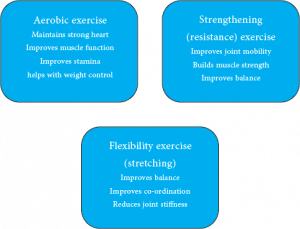Exercise for Beginners
Are you new to exercise? Have you recently taken up running? Do you find yourself struggling with niggles after that new HIIT workout?
Due to the Coronavirus there has been an increase in people taking up home exercise routines such as High Intensity Interval Training (HIIT) and running. This is partly to stave off boredom and escape the house, and partly to try and balance out all those extra “working from home” snacks!
We should all now be aware that the government suggests limiting exercise to up to 1 hour of daily outdoor exercise, suggesting a run of 30minutes as an option. However if you are new to exercise this daily increase in activity may lead you to feel muscles working in a different way and you may notice some niggles creeping in.
Locally we are certainly seeing more joggers out on the street, and with peoples participation in HITT workouts being posted on social media daily, it has got us wondering: what is the most sensible approach to take if you are new to all this activity?
We know that the vast majority of injuries we see are due to doing too much too soon – or what we call “overloading” our tissues. When it comes to running specifically, statistics show that up to 70% of all runners will suffer an overuse injury in a 12 month period and being an inexperienced runner puts you at higher risk of injury. So how can we try to reduce the risk of niggles creeping in when trying to stay, or indeed start, being more active?
Before you kick start your exercise journey, it may be useful to know a bit about the 3 types of exercise and how we should be participating in them.

We should all try to be physically active everyday however the recommendations for “moderate” (where you are out of breath but can still maintain a conversation) exercise are 150 mins per week, or 30mins on 5 days. You should also try and incorporate strength and flexibility training on 2 days per week if you can.
This may seem like a daunting prospect when you have perhaps been much less active. Here are a few basic tips that may help you start, and more importantly maintain, regular activity.
1. Set yourself a goal: use this to keep you motivated, ensure it has a timescale and is realistic for you
2. Ensure you have the right equipment: this may just be loose clothing and comfortable shoes. Having the right kit can help reduce injuries and allow you to move more freely.
3. Do something you enjoy: you don’t have to be a gym bunny or be clad in Lycra to reap the benefits of becoming more active. Exercising with a friend may also help boost motivation.
4. Build up gradually: don’t be tempted to try and do too much too soon, this could lead to becoming unmotivated and lead to injuries. The important thing is to keep at it regularly, and be patient, it can take 4-6 weeks to build up your tolerance. There are lots of useful apps to help keep you on track (e.g. couch to 5k)
5. Vary your training/activity: try and do a mix of activities throughout the week, for example some strength work one day and aerobic such as walking/running/swimming the next.
6. Warm up sufficiently: this should include some light cardiovascular exercise to increase your heart rate (for example a brisk walk or marching on the spot) and some light stretching movements which prepare the muscle groups you will be working.
7. Go for lower impact options if suffering from joint pain: for example brisk walking or swimming may be better for those with hip and knee pain than running.
8. Remember nutrition and hydration are important: eating a balanced diet will give you the energy you need to and help the body to rebuild muscle and keep bones healthy. Keeping the right level of hydration will also keep your body in balance when regularly exercising.
9. Listen to your body – do not train through pain: when you start exercising it is normal for muscles to feel achey and fatigued. This should not persist however and if it does it is worth getting some advice from a healthcare professional.
You may want to try these as a circuit (choosing one variation eg each exercise) for 2-3sets of 10 repetitions, or simply try 1-2 exercises a day’
Always consult a healthcare professional if you have any concerns or queries about taking up any new exercise regime.
Not sure where to start with your regime? See the video below demonstrating some basic strengthening exercises.
There are also some useful resources below which may help start you on your journey to becoming more active.
• NHS strength and flex regime for complete beginners to exercise
• CSP love activity, hate exercise campaign to get started with exercise
If you have any questions, or want to discuss any barriers or injury issues which may be stopping you on your exercise journey get in touch at bookings@physio-flex.co.uk or on 01506237770 to speak to one of the Physioflex Team.


